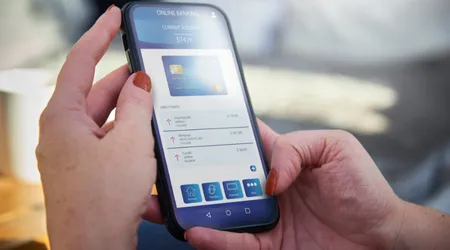In today's fast-paced world, the search for instant financial solutions has gained momentum, and quick loan apps emerged as a tempting answer.
Advertisements
With just a few clicks, you can obtain credit without leaving your home, but this convenience comes at a price that not everyone is prepared to pay.
Is the agility of these apps a genuine relief or a trap in disguise?
This article delves into the benefits, risks, and implications of these services, exploring how they shape financial behavior and what you need to know before clicking “apply.”
The Promise of Agility: Why Are Quick Loan Apps So Attractive?

You quick loan apps gained popularity with the promise of streamlining access to credit.
Unlike traditional banks, which require long lines, extensive documentation, and weeks of analysis, these platforms provide answers in minutes.
++ Social Media Shopping: How It's Changing Consumer Economic Behavior
For example, imagine Ana, a freelancer who faces an unexpected car repair. With no financial reserves, she downloads an app, enters her details, and in less than an hour, has R$ 2,000 in her account.
This speed is a powerful differentiator, especially in emergencies.
Furthermore, accessibility is an undeniable attraction.
Many of these applications operate 24/7, allowing requests to be made at any time without the need for human interaction.
In short, this is particularly useful for those who live in remote areas or have opening hours that are incompatible with bank branches.
However, ease of access can mask a lack of financial guidance.
The absence of a consultant to explain the terms of the contract, for example, leaves the user vulnerable to impulsive decisions.
Finally, the technology behind these apps, such as artificial intelligence-based credit analysis algorithms, allows approvals even for those with low credit scores.
++ Simple Finance: Tips That Work Even for People Who Hate Numbers
However, this inclusion comes at a cost: interest rates that are often higher than those of traditional banks.
So while agility is a real benefit, it can seduce users into ignoring the inherent risks, such as long-term debt.
The Hidden Risks: When Convenience Becomes a Trap

Despite the practicality, the quick loan apps hide dangers that can turn a momentary solution into a lasting problem.
One of the biggest risks is the exorbitant interest rate.
According to the Central Bank of Brazil, in 2024, the average interest rate on personal loans in fintechs reached 87% per year, compared to 40% in traditional banks.
++ How to Create a Financial Routine Without Getting Stuck on the App
This difference can mean installments that consume a large portion of income, especially for those who are already in a delicate financial situation.
Furthermore, another critical point is the lack of transparency.
Many apps emphasize how easy the process is, but contract terms, such as late fees or additional charges, often appear in the fine print.
Consider the case of John, a young man who applied for R$ 1,000 to pay off a medical debt.
Without reading the details, he didn't realize that the contract included a 10% administration fee and daily late fees.
In three months, the debt doubled, compromising its financial stability.
Furthermore, ease of access can encourage irresponsible use.
Like a faucet that never turns off, these apps allow for repeated requests, creating a cycle of debt.
The lack of financial education exacerbates the problem, as many users do not plan their repayment before taking out the loan.
So what starts as an agile solution can turn into a financial snowball.
Comparing Benefits and Risks: A Balanced View
To better understand the quick loan apps, it is useful to compare their advantages and disadvantages.
The following table summarizes the main points:
| Aspect | Benefits | Risks |
|---|---|---|
| Speed | Approval in minutes, ideal for emergencies. | Impulsive decisions without financial planning. |
| Accessibility | Available 24/7, no need for a physical branch. | It can encourage overuse and debt. |
| Rates and Interest | Access to credit even with a low score. | High interest rates, often above 80% per year. |
| Transparency | Simplified process, without bureaucracy. | Confusing contract terms with hidden fees. |
| Financial Education | Does not require consultation with specialists. | Lack of guidance can lead to inappropriate choices. |
This analysis reveals that while apps offer convenience, the risks require caution.
Agility is an undeniable advantage, but without planning, it can lead to serious consequences.
Therefore, the user needs to carefully weigh the cost-benefit before resorting to these platforms.
Loan as a Remedy
Think about us quick loan apps as a headache remedy. When taken in the right dose, it quickly relieves the problem.
However, if used excessively or without a prescription, it can cause serious side effects, such as addiction or health damage.
Similarly, a quick loan can solve an emergency, but indiscriminate use, without understanding the terms or planning for repayment, can lead to a chronic financial crisis.
This analogy reinforces the importance of using these services with moderation and awareness.
Furthermore, just as a doctor evaluates a patient before prescribing a medication, the user must evaluate their own financial situation.
Ask yourself: “Is this loan the only way out, or can I reorganize my budget?”
This reflection can avoid hasty decisions.
Ease of access should not replace the responsibility of managing finances.
On the other hand, the analogy also highlights the value of apps in specific situations.
Just as painkillers are essential in a crisis of pain, a quick loan can be the solution for those facing an unforeseen event with no other options.
The secret is to use it wisely, as a temporary resource, not as a financial crutch.
Financial Education: The Key to Using Apps Safely

The best way to take advantage of quick loan apps without falling into traps is investing in financial education.
Before applying for a loan, it is essential to understand concepts such as interest rates, total effective cost (CET), and the impact of installments on your budget.
Many applications offer simulators that show the final amount to be paid, but few users use this tool critically.
Furthermore, looking for alternatives before resorting to a loan can make all the difference.
For example, negotiating terms with creditors, reducing unnecessary expenses, or even seeking extra income are strategies that can avoid the need for credit.
A study by SPC Brasil revealed that 60% of Brazilians who resort to loans do not try other solutions first, which increases the risk of default.
Finally, it is essential to read the contract carefully.
Many apps provide terms in accessible language, but rushing can lead users to ignore them.
A good practice is to compare different platforms, checking rates, deadlines, and user reviews.
With knowledge and planning, quick loan apps can be a useful tool, not a source of trouble.
Frequently Asked Questions about Quick Loan Applications
Below is a table with answers to the most common questions about quick loan apps, offering clarity and guidance:
| Question | Response |
|---|---|
| Are the apps safe? | It depends on the platform. Choose apps regulated by the Central Bank and with good reviews. Check the privacy and data security policies. |
| What is the credit limit offered? | It varies depending on the application and user profile, generally between R$ 500 and R$ 10,000 for new customers. |
| Can I apply with a low score? | Yes, many apps approve credit for low scores, but with higher interest rates. |
| What happens if I'm late with my payment? | Daily fines and interest are applied, increasing the debt. Some apps report late payments to credit bureaus, affecting the score. |
| How to compare different applications? | Check the CET, deadlines, administrative fees, and user reviews on trusted platforms. |
These answers help clarify common questions, but each case is unique. Before making a decision, research and plan carefully.
Conclusion: Quick Loan Apps
You quick loan apps are a powerful tool, capable of resolving financial emergencies quickly and conveniently.
However, like any tool, its use requires responsibility.
The convenience of obtaining credit in just a few clicks should not overshadow the risks of high interest rates, unclear terms, and debt.
With financial education, planning, and a critical analysis of contracts, it is possible to use these applications safely and effectively.
So before you click “request,” ask yourself: Are you treating an emergency or just postponing a bigger problem?
The answer to this question can determine whether the quick loan apps will be your allies or your executioners.
With knowledge and caution, the choice is yours.
